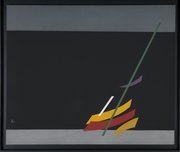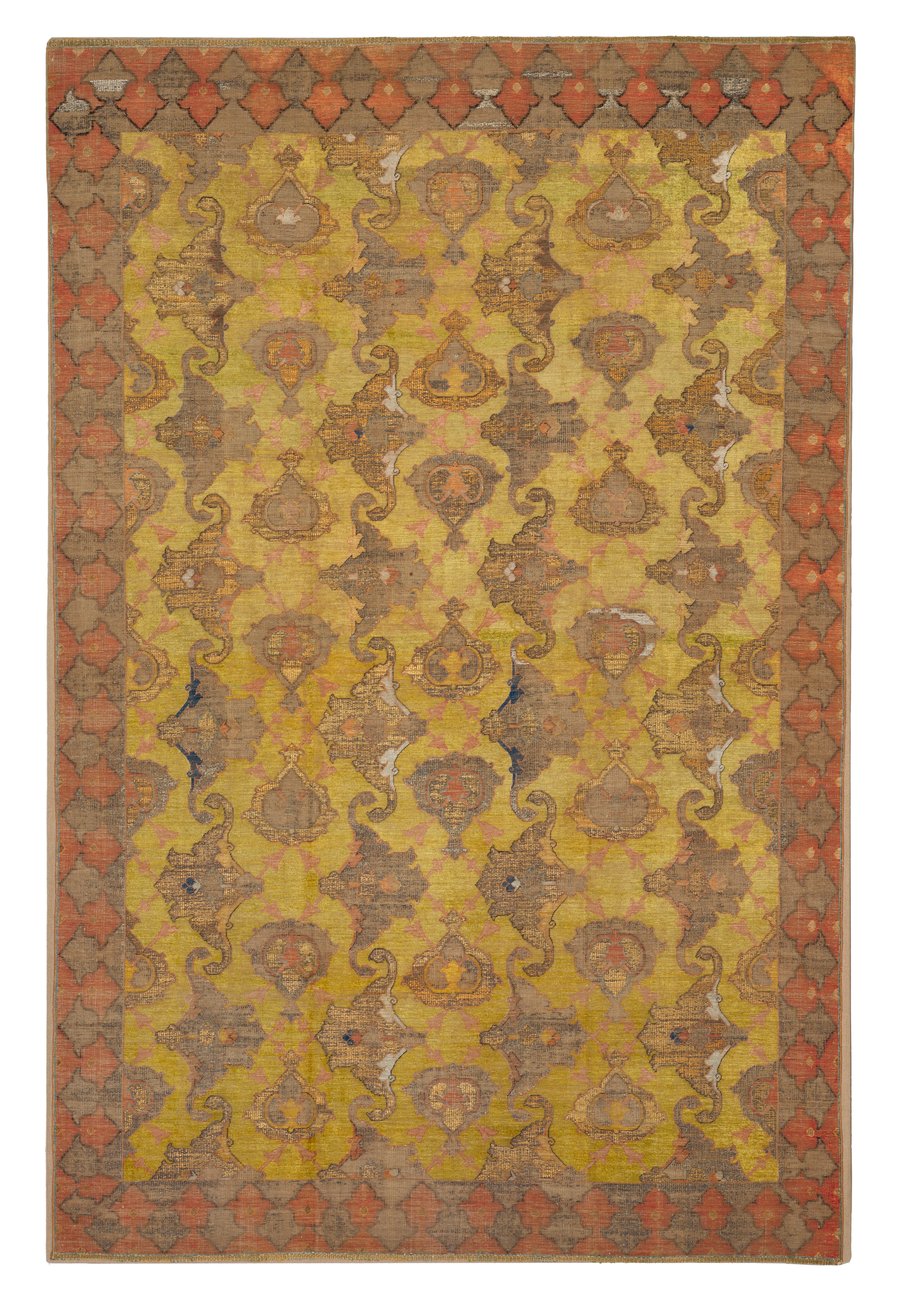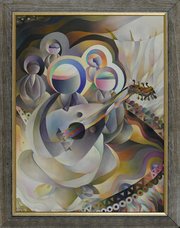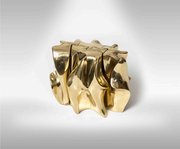
The Rothschild Polonaise Carpet
Museum of Islamic Art
- Title:
- The Rothschild Polonaise Carpet
- Production place:
- Isfahan
- Date:
- 1600 - 1699
- Period:
- Safavid
- Title:
- The Rothschild Polonaise Carpet
- Production place:
- Isfahan
- Date:
- 1600 - 1699
- Period:
- Safavid
- Material:
- Silk, Cotton, Metallic thread
- Technique:
- Weaving
- Dimensions:
- 215 × 143 × 3
This silk and metallic brocade rug is known as the "Rothschild Polonaise Carpet" after its illustrious former owner. Such carpets, characterised by a restrained palette of bright and warm hues of yellows, cream and browns and a minute pattern of latticework of foliage and palmettes and the use of gold and silver (now tarnished) threads, were woven in the royal workshops established during the reign of Shah 'Abbas I between the late 10th and the early 11th century AH (end of 16th and the early 17th century CE). Their production continued in various workshops across Iran throughout the 11th century AH/17th century CE. They were often offered as royal gift to foreign rulers and diplomats, hence their presence in Europe in several aristocratic households. The adjective "Polonaise" (lit. Polish) refers to what was considered in the past the region of production of such particular rugs. It was given by the end of the 19th century CE in France, when a group of carpets of this kind was exhibited to the public. The motifs woven into the carpets led viewers to assume they were Central European textiles, and the name endured. The luxurious materials and fine workmanship mark these carpets as a distinct corpus, alongside their decorative motifs and overall outlook.



